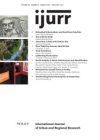This article analyzes the efforts to regenerate Istanbul’s urban waterfront area of Haliç (the Golden Horn), since the mid‐1980s, from the perspective of the actors involved and their power dynamics. It uses as examples three projects: the Fener‐Balat neighborhood rehabilitation, Feshane Cultural Center, and Rahmi M. Koç Museum initiatives. It argues that the case of Haliç cannot be understood through concepts such as the public‐private partnerships, intense processes of urban entrepreneurialism, gentrification etc., which have often explained the experience of the North American and Western European city. Instead, this process has been shaped by a top‐down initiative on the part of public sector actors initially, and a lack of private sector involvement, ambivalent public sector actors and reluctant local communities subsequently. One needs to highlight the particularities of the institutional arrangements and urban politics at the district, city and national levels in order to explain the case of Haliç. These concern low amounts of self‐generated revenue in district and metropolitan municipalities, the specificities to be found in the local community–municipality relations in Istanbul, the presence of a relatively weak private sector in Turkey and, finally, the unfavorable market position of Haliç more generally and the projects in question more specifically.
Details
Written by:
DIKMEN BEZMEZ
Digital Object Identifier (DOI)
10.1111/j.1468-2427.2008.00825.x
About DOI
Read full article as PDF
Read full article as HTML
See the references for this article
